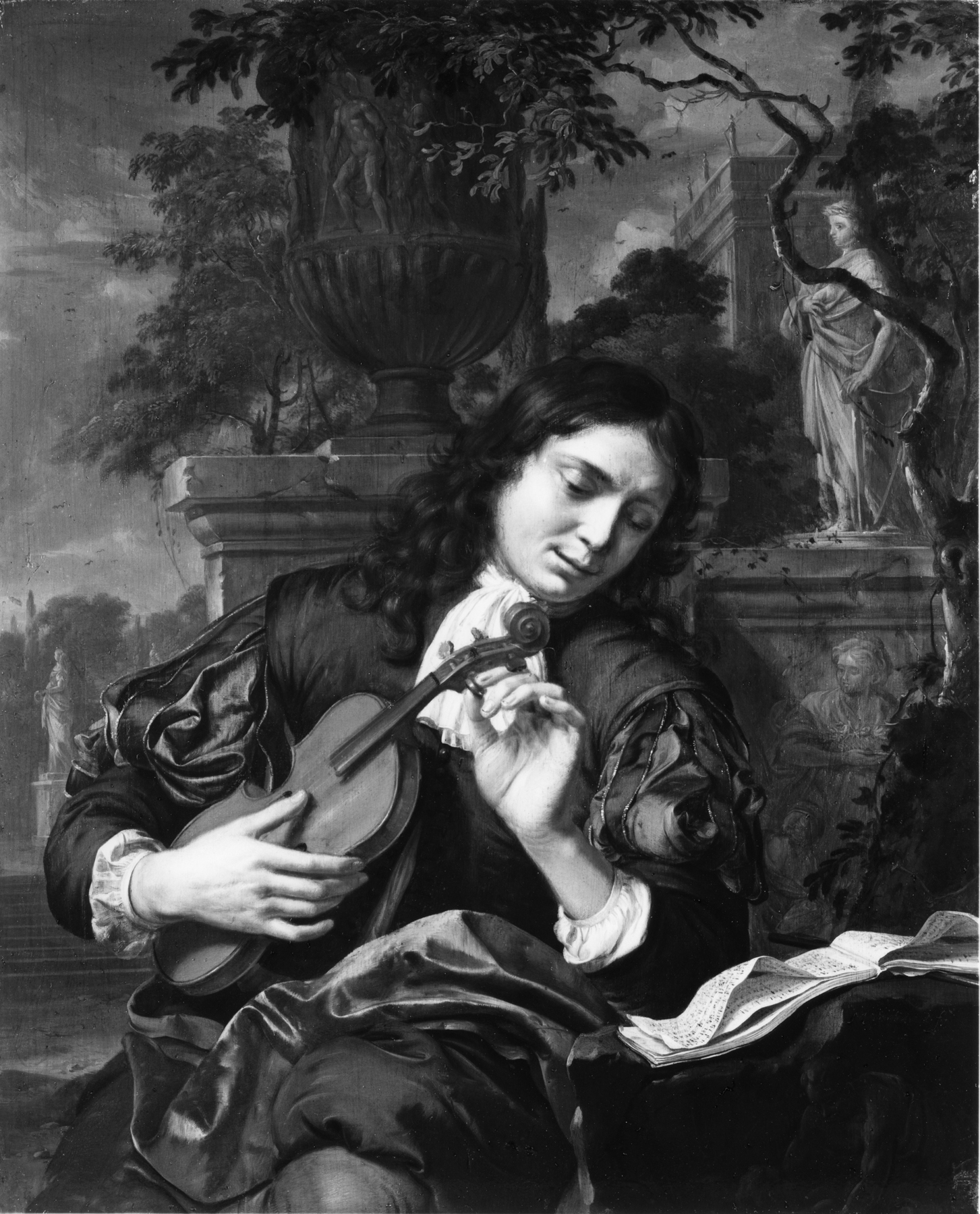The Violinist
(Baroque Europe )
Music is often celebrated in 17th-century Dutch art as a metaphor for love. This theatrically dressed young man tunes his violin while considering the music he will play. It is written for two parts, so "The Violinist" was originally accompanied by a painting of a young woman. This is a suggestive invitation to join in a duet. On the pedestal to the right stands a statue of the Muse of music, Euterpe with her harp, as if to inspire their harmonies.
The soft modeling of the face is in the style of Wytmans's teacher in Utrecht Jan van Bylert, but his crisp satins reflect the refined images of courtly life produced throughout the Dutch Republic in the later 1600s.
Inscription
Provenance
Provenance (from the French provenir, 'to come from/forth') is the chronology of the ownership, custody, or location of a historical object. Learn more about provenance at the Walters.
Don Marcello Massarenti Collection, Rome, no. 580; Henry Walters, Baltimore, 1902, by purchase; Walters Art Museum, 1931, by bequest.
Exhibitions
| 1971-1972 | World of Wonder. The Walters Art Gallery, Baltimore. |
Conservation
| Date | Description | Narrative |
|---|---|---|
| 12/1/1944 | Treatment | coated; loss compensation; cleaned |
| 3/27/1957 | Treatment | cleaned |
| 4/17/1967 | Treatment | repaired; loss compensation; coated; cleaned |
| 1/29/1993 | Examination | examined for condition |
Geographies
Netherlands, Utrecht (Place of Origin)
Measurements
12 x 9 3/8 in. (30.5 x 23.8 cm)
Credit Line
Acquired by Henry Walters with the Massarenti Collection, 1902
Location in Museum
Not on view
Accession Number
In libraries, galleries, museums, and archives, an accession number is a unique identifier assigned to each object in the collection.
In libraries, galleries, museums, and archives, an accession number is a unique identifier assigned to each object in the collection.
37.382


